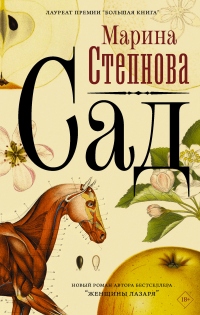Читать книгу "Легитимация власти, узурпаторство и самозванство в государствах Евразии. Тюрско-монгольский мир XIII - начала XX века - Роман Почекаев"
Шрифт:
Интервал:
Закладка:
The part II, “Collapse of Empires: ‘Old’ and ‘New’ Factors of Legitimacy”, devoted to period of dissolution of imperial Chinggisid states when political authority of the “Golden Blood Line” decreased and its members lost their monopoly for supreme power in the Turko-Mongol states. New pretenders of non-Chinggisid origin challenged them in fi ght for the throne.
In the chapter 3, “The Genealogical Factor”, is described the fi ght for power of some pretenders who still relied on factor of origin as the were relatives of Chinggisids: as descendants of khans’ daughters and sisters of descendants of more distant relatives of Chinggis Khan by spear side. This relation to Chinggisids was demonstrated by using khan’s title, issuing khan’s decrees (‘yarlks’), as well as by continuation Chinggisids’ policy in international, military, trade and even cultural (including historical works and poetry) fi elds.
Substantial part of non-Chinggisid pretenders, however, couldn’t fi nd ties with the “Golden Blood Line” and had to fi nd “new” factors to justify their claims. In the chapter 4, “Religious Factor”, are analyzed attempts to obtain the throne by pretenders who relied on religious substantiations of their rights. In the Turkic world there were, as a rule, descendants of respected Moslem clergymen (especially seyids and hojas who were considered as descendants and relatives of the Muhammad the Prophet). In Mongol states another type of religious legitimating was widespread: will of Buddhist hierarchs (as Dalai Lama of Tibet or Bogd Gegen of Mongolia) to ascend khan’s title by concrete rulers even of non-Chinggisid origin.
And the third (also “new”) factor is examined in the chapter 5, “Regional Factor”. Disintegration of Chinggisid empires caused fi ght of dif erent lines of Chinggis Khan’s descendants for power in new-founded states. Permanent change of dif erent monarchs on the thrones as well as recurrent leaving of own state in search of more prestigious and rich one forced local population to reject the right of Chinggisids to rule and give power to native leaders – not rare descendants of former Chinggisids’ of cialls.
The part III, “Steppe Empires under the Power of Settled Empires: Foreigh Factor of the Fight for Power”, devoted to period of 16th – beginning of the 20th cent. (with prelude in the end of the 14–15th cent.) when Turko-Mongol states were placed under authority of foreign empires such as Ottoman, Chinese, Russian. It caused the appearance of new types of non-legitimate rulers.
In the chapter 6, “Attempts of Establishment of the Foreign Suzerainty and the Problem of Legitimacy of Foreign Protégés”, dif erent types of non-legitimate monarchs are characterized: Chinggisid khans who already were in power but than became vassals of foreign monarchs; Chinggisid khans who ascended the throne with help of foreign suzerains; non-Chinggisid khans supported by foreign monarchs as alternative rulers in Turko-Mongol states.
The chapter 7, “New Substantiations of Taking Power during the Foreign Suzerainty”, is about monarchs which came to power not with support but by direct order of suzerains. Attitude of subjects to such khans was dif erent at the early stage of foreign suzerainty (when such protégés were considered as usurpers) and the later one (when order of suzerain became the main factor of legitimacy, even more important than Chinggisid origin). There also in this chapter cases of ascension the thrones of the Turko-Mongol states by foreign monarchs are analyzed. Such “khans” themselves, as a rule, didn’t need in justifying of their power, but new subjects made legal substantiations to present their power in the Turko-Mongol world not a conquest and submission but as a legitimate rule. One more new type of usurpation appeared in the period of foreign suzerainty was connected with election of khans from hereditary Chinggisids and with observance of all legal rules but without confi rmation of suzerain. Such khans (absolutely legitimate in the previous period of independence) thus became the usurpers!
The chapter 8, “National Liberation Movement As Argument to Claim the Power”, devoted to another factor of legitimating of pretenders’ claims: using the national liberation movement as argument to ascend the throne. Of course, such argument could be used only during the period of foreign dominance. And if one group of pretenders came to power relying only on national liberation movement, another used more sophisticated means of legitimating their claims for power. So, descendants of former infl uent clergymen used religious factor (which was described in details in the forth chapter) in the new way: religion became the factor of unifi cation for fi ght against conquerors, and religious leaders, thus, became national ones! Some rulers appointed by foreign authorities were able to understand that their states were ready to fi ght against suzerains and, refusing factor of foreign support, relied on national factor to save and increase own power.
The part IV, “Impostors in the Turko-Mongol States”, is about pretenders who tried to obtain the throne posing themselves as legal claimants. As in other states and epochs, peaks of impostures were in times of troubles when real claimants were eliminated in very short terms and this facts were not known to the most part of people.
In the chapter 9, “Types of Impostors”, dif erent categories of pretenders are described: ones posed themselves as real members of ruling families, others pretended to be fi ctitious princes; specific group of impostors was presented by princes whose origin was not clear and they were recognized as legal heirs by one part of subjects and as usurpers by another one. Besides that some cases of impostures couldn’t be attributed to one of above mentioned types (for example, adopted or legitimized sons, persons who pretended not to be members of royal families but subjects of foreign suzerains, etc.).
In the chapter 10, “Limits of Claims for Power”, author analyzed the “scale of ambitions” of specific impostors. So, pretenders for the throne of regional level had chance to obtain and save power for some time, as for claimants for supreme power, practically all of them were disclosed and killed or executed. In this connection it’s interesting to mention rather specific group of impostors who quite didn’t attempt to reach the regional or supreme power: some carpet-baggers posed themselves as rulers (who, in fact was already dead) or descendants of khans to get protection or to improve own well-being.
The part V, “Usurpers and Impostors of History”, devoted to historiography phenomenon: some rulers became usurpers and impostors in historians’ opinion. The cases of such accusations hurled by medieval historians are examined in the chapter 11, “Usurpers and Impostors in the Medieval Historiography”, and the same accusation from the scientists of the 19th – beginning of the 21th cent. – in the chapter 12, “Usurpers and Impostors in the Modern Historiography”.
The research is based on the wide range of historical sources (chronicles, of cial documents, memoirs of contemporaries, etc.) as well as on research works since 18th to the beginning of the 21th cent.
Внимание!
Сайт сохраняет куки вашего браузера. Вы сможете в любой момент сделать закладку и продолжить прочтение книги «Легитимация власти, узурпаторство и самозванство в государствах Евразии. Тюрско-монгольский мир XIII - начала XX века - Роман Почекаев», после закрытия браузера.




